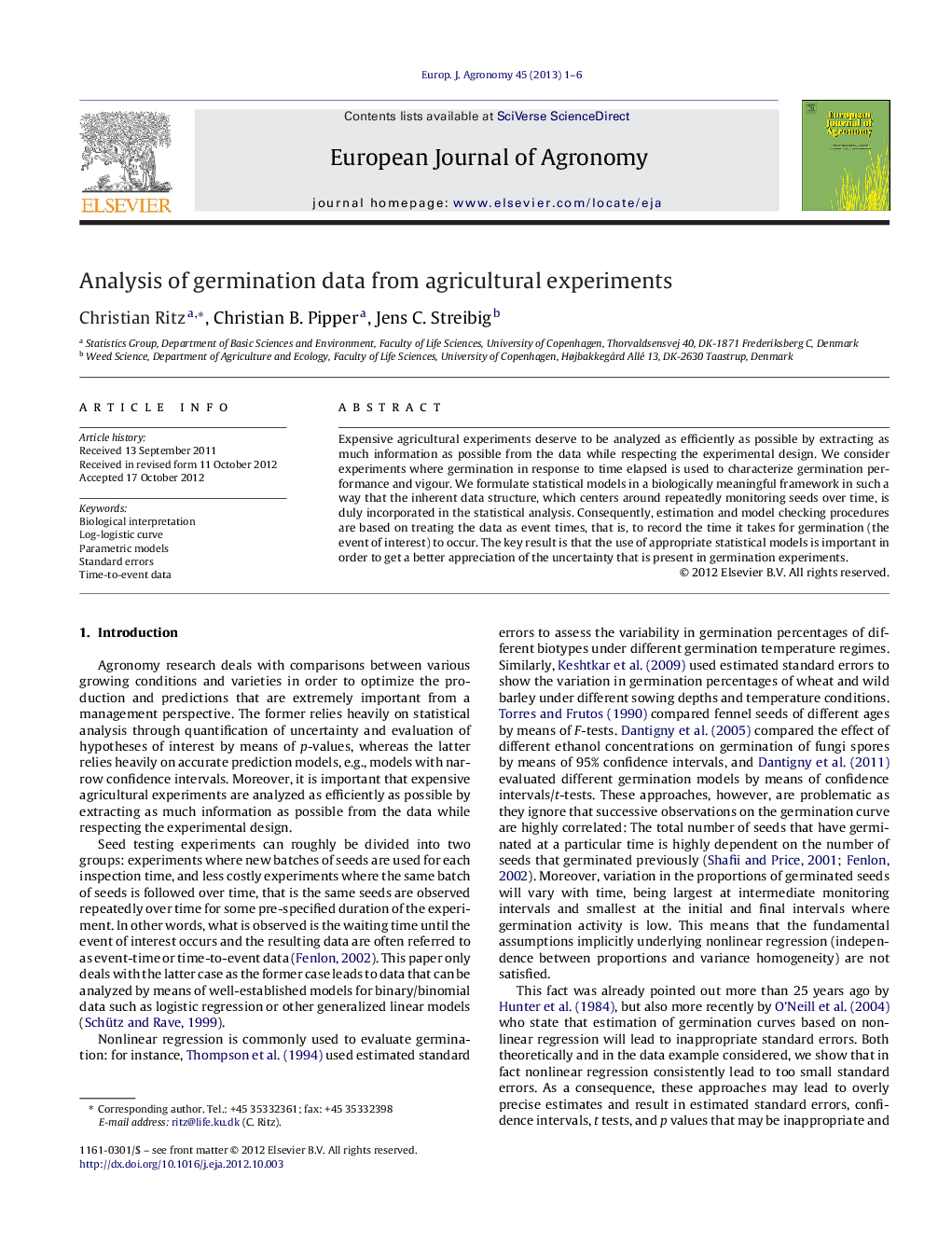| Article ID | Journal | Published Year | Pages | File Type |
|---|---|---|---|---|
| 4509051 | European Journal of Agronomy | 2013 | 6 Pages |
Expensive agricultural experiments deserve to be analyzed as efficiently as possible by extracting as much information as possible from the data while respecting the experimental design. We consider experiments where germination in response to time elapsed is used to characterize germination performance and vigour. We formulate statistical models in a biologically meaningful framework in such a way that the inherent data structure, which centers around repeatedly monitoring seeds over time, is duly incorporated in the statistical analysis. Consequently, estimation and model checking procedures are based on treating the data as event times, that is, to record the time it takes for germination (the event of interest) to occur. The key result is that the use of appropriate statistical models is important in order to get a better appreciation of the uncertainty that is present in germination experiments.
► We model cumulative germination curve. ► Nonlinear regression will lead to incorrect and overly precise estimates. ► Instead we use statistical models for event time or time-to-event data. ► However, we maintain the biological interpretation of model parameters that is important in practice. ► Appropriate statistical analysis is demonstrated.
